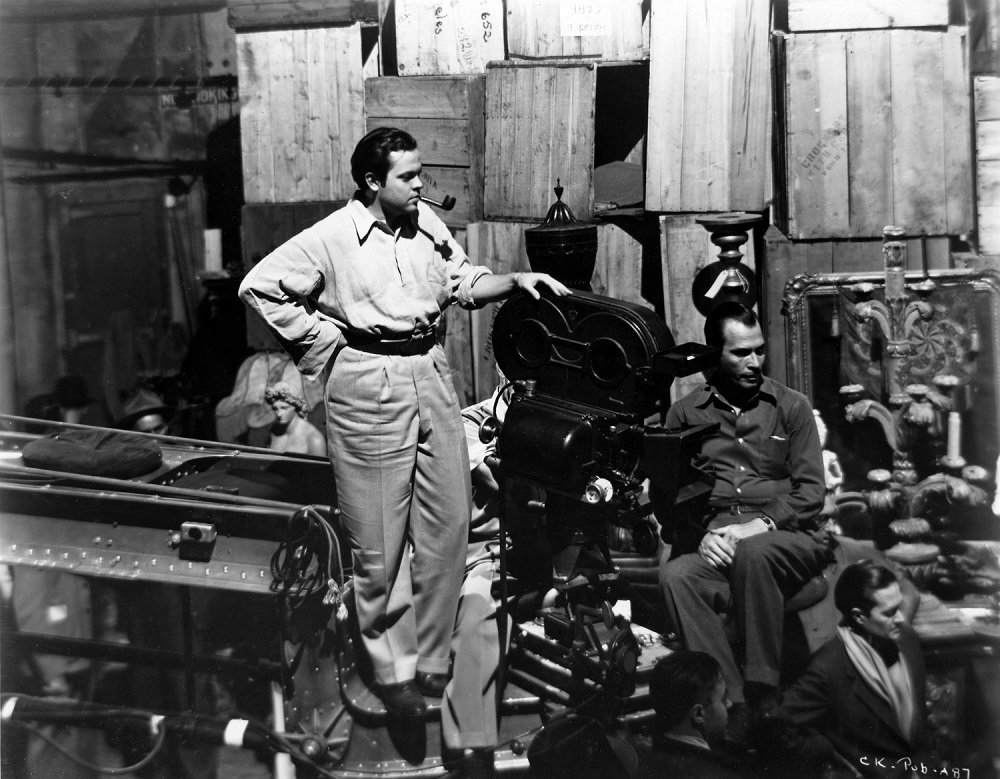There’s a certain photo that director Mark Cousins continually returns to in his documentary, The Eyes of Orson Welles. It features Welles, then in his early 20s, sprawled on a bed. Resting his head upon his arm, his soulful eyes stare brightly down the lens of the camera.
This photo not only serves as an anchor for Cousins’s goal – to consider how those eyes studied and interpreted Welles’s world – but a tone setter for the film as a whole. For The Eyes of Orson Welles is not so much a film as it is a love letter from one artist to another. As Cousins narrates, drawing links between his subject’s work and personal life, the picture appears, as if Cousins is imagining Welles listening intently to his insight.
It sounds a little self-indulgent, and at times it is, but the decision speaks to the passion and intelligence that makes The Eyes of Orson Welles a notable chapter in the continued study of one of the greatest artists the world has ever known.
The bulk of Cousins’s unique insights are derived from the access he received to Welles’s vast collection of drawings. Though he first took to the medium at the age of nine, it wasn’t until three years later. while travelling in Germany with his father, that Welles began to explore and react to the world through paintings and sketches. It’s a habit that continued throughout his life, and one that Cousins proposes came to define his visual language. From the sketching of peculiar facial features that he would imbue in his characters through practical effects, to experiments with lighting and depth that would start on the page before ending up on the screen, there’s a convincing argument here to demonstrate how Welles used one creative medium to frames his ideas in another.
Given his fascination, it’s unsurprising that Cousins quickly expands his portrait of Welles to include his life beyond film, theatre, drawing, and radio plays. In fact, the majority of the documentary’s 110 minutes is spent highlighting Welles’s political interests, his bold, even voracious love life, his relationship with power, and appetite for glory. Cousins never pulls his punches when discussing Welles’s vices, but he’s careful to show respect. He is not trying to tar his subject’s reputation; instead, to provide as honest a look as possible at how Welles went from a humble explorer of the world to a legend who once referred to himself as a king.
Welles even gets a chance to rebut Cousins’s depiction of him from beyond the grave in a sequence inspired by the director’s dream. Dream Welles is patient and considerate as he explains why Cousins has misinterpreted elements of his approach. Considering Welles’s reputation as a mean critic, Cousins should consider himself lucky.
The inclusion of this sequence is risky, but so is much of what makes The Eyes of Orson Welles unique. Referring to Welles in the second person in his narration, limiting background music to set a more intimate tone, the occasional selfish side note that seeks to serve his curiosity rather than the story – Cousins’s directorial decisions makes him a provocative and fresh voice in documentary filmmaking.
Some viewers may feel overwhelmed as a result. The Eyes of Orson Welles is an incredibly dense documentary, and there are times when it feels like Cousins is so in the zone his letter will never come to an end. Nevertheless, fans of Welles and those who thrive on understanding the creative process of great minds will likely remember the documentary as one of their favourites of 2018.

